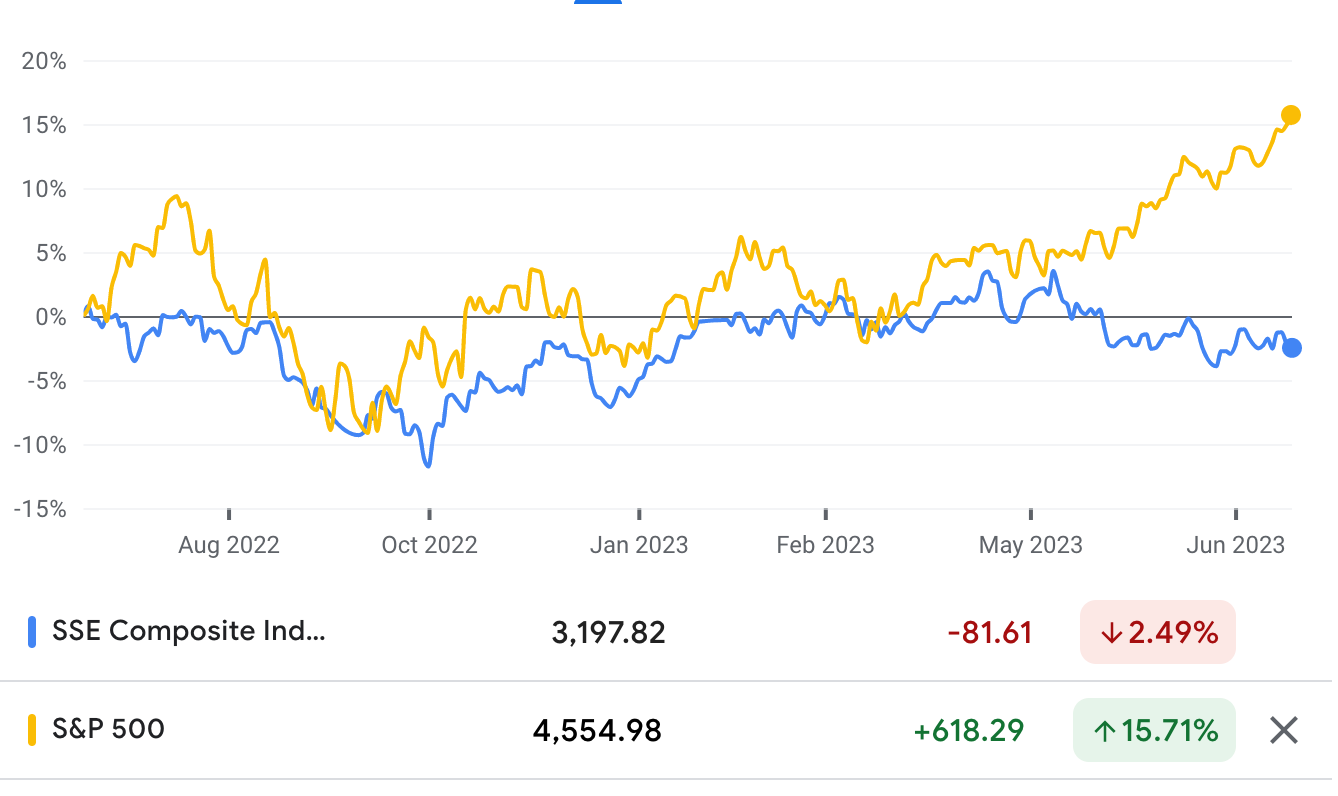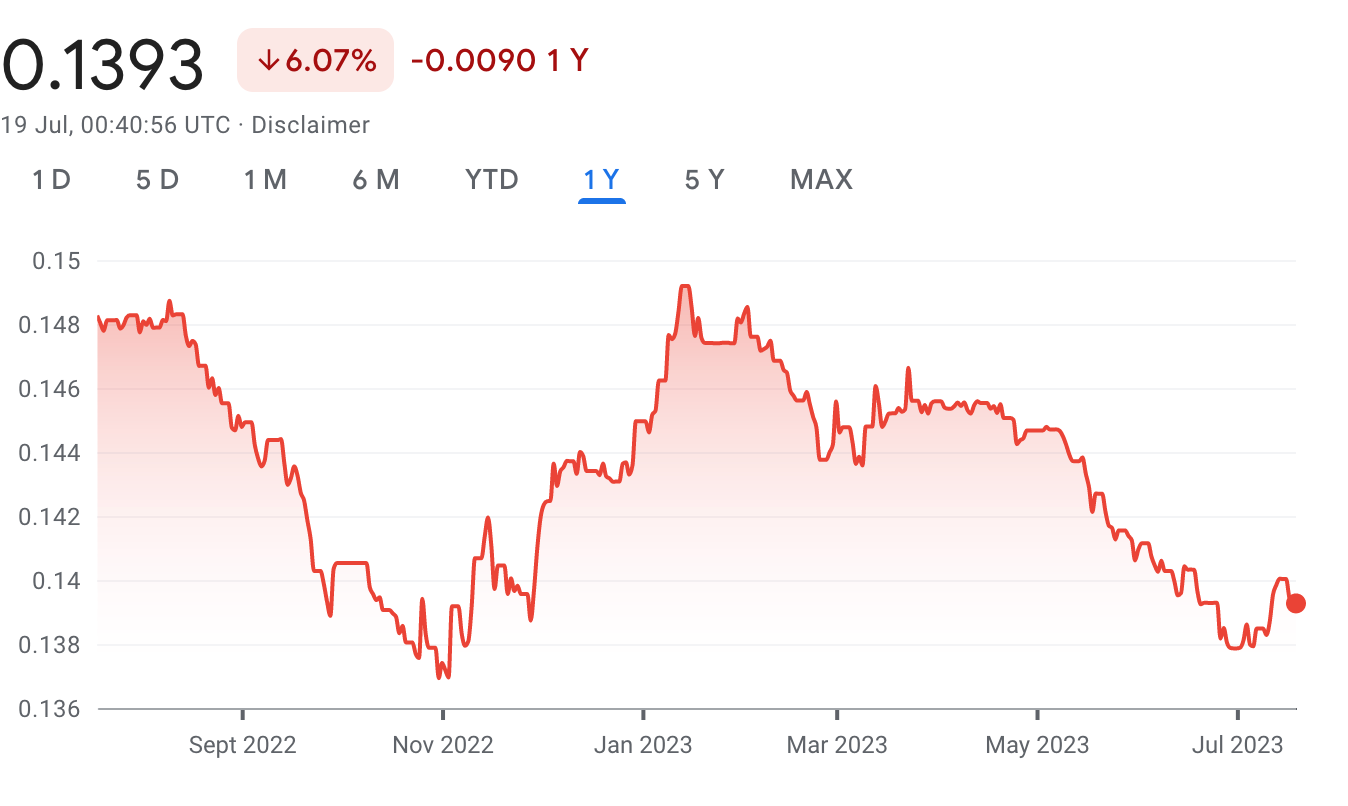China’s investors head for the exits as domestic asset prices follow the economy south
(Originally published July 19 in “What in the World“) China’s weakening economy is amply reflected in its stock market. See below Shanghai’s stock index, which has fallen 2.5% in the past year while the S&P500 has gained almost 16%, led primarily by the stocks of tech giants like Amazon, Apple, Google, Microsoft, Nvidia, and Tesla.

China’s currency, the renminbi, has also been tumbling, as exports cool and capital outflows rise. The renminbi, or yuan, has fallen 6% against the U.S. dollar in the past year.

That’s creating a negative feedback loop, as China’s investors try to avoid falling asset prices at home by buying assets overseas. That’s feeding demand for investment into two foreign-investment programs in which institutions raise cash from mainland investors to invest it abroad—the qualified domestic institutional investor (QDII) and domestic foreign limited partner (QDLP) programs. By the end of June, authorities in Beijing had granted $162.7 billion in QDII investment quotas this year, according to KPMG, and $58 billion for QDLP.
Capital outflows risk pulling domestic asset prices—including property—even lower, exacerbating the risk of a property market crash, widespread defaults and a financial crisis.
Both China and the U.S. do share one thing in common: both are suffering from a catastrophic northern hemispheric heat wave exacerbated by man-made climate change. Yesterday marked a record 27th day this year that temperatures in Beijing exceeded 35°C. The heat is likely to cause more droughts and flooding across China.
Visiting U.S. climate envoy John Kerry hopes the heat will help kindle constructive conversation with China’s leaders about getting Beijing back behind efforts to halt climate change.
Bingo score: 4 (Risk nos. 5, 6, 7 and 17)
Biggest risks to China’s economy:
- U.S. sanctions hit exports
- U.S. restrictions on investment and technology transfers slow development of higher productivity services
- Consumer spending fails to replace reliance on investment
- Weakening global demand, global recession hits China’s goods exports and inward investment
- Housing market correction—affects savers, developers, local governments
- China succumbs to a deflationary spiral
- Financial Crisis: Rising debts pose a risk to the country’s financial stability. Excessive debt could lead to potential defaults, liquidity issues, financial contagion, and a financial/economic crisis.
- Limitations on key technology imports
- Debt: High debt risks squeezing out real investment and growth. China’s corporate, household, and government debt levels have been steadily rising.
- President Xi Jinping dies, quits suddenly or is deposed
- China fails to participate meaningfully in solving global climate change
- Policies fail to revive declining productivity
- China restricts exports of key metals and minerals necessary for sustainable technologies that mitigate climate change
- Ageing population, rising social welfare costs and higher labor costs
- Foreign companies continue shifting supply chains out of China, disinvesting
- Failure to fix the healthcare system
- Climate change hastens deteriorating environment and related risks to property, capital, food supplies, health and lives
- Economic policy moving from pragmatism-led to ideologically driven policies that favors State-owned enterprises over entrepreneurial startups and free markets
- Failure to successfully grow services sector to replace reliance on manufacturing
- U.S. and China militaries clash in Taiwan Strait or South China Sea
- Lower-carbon industries fail to grow and replace high-intensity ones
- High youth unemployment gives way to unrest
- China suffers diminished or interrupted access to key commodity imports